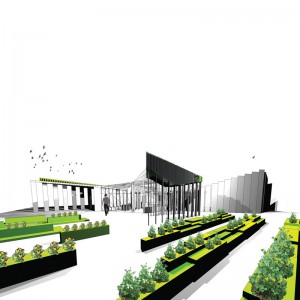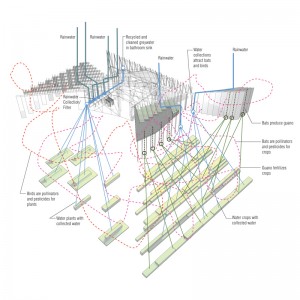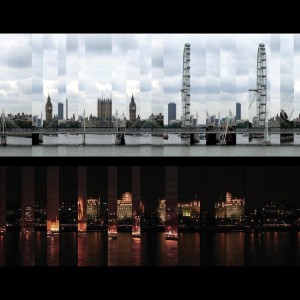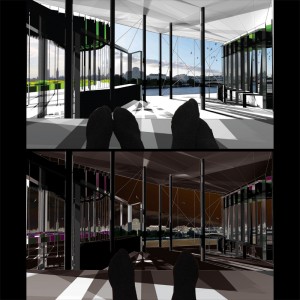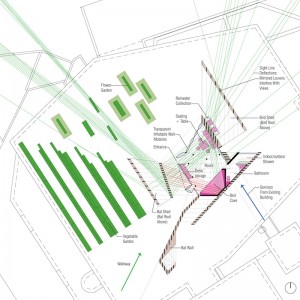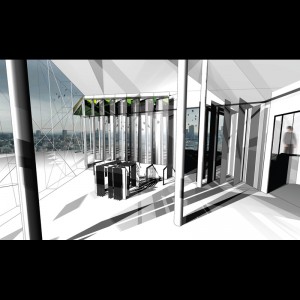2010, A Room for London Competition
A Rooftop Habitation for humans and animals: Guests of CO-HABITAT are situated between and along a series of urban wildlife habitation structures, designed particularly to attract and accommodate birds and bats. As natural pollinators and ‘pesticides,’ these animals would stimulate the growth of rooftop crops and other vegetation over time. With potential opportunities to see birds nesting or bats hunting for mosquitoes (consequently providing a natural means of mosquito-abatement for humans), CO-HABITAT is an experience for recreational enthusiasts of urban nature and scientists alike. From the project’s interior spaces, human inhabitants will become extra-aware of their surrounding environment through vision. The project proposes a wall system comprised of mirrored-louvers that would mediate selected views toward the city. The effects of these mirrors would draw attention to the urban context by fragmenting the skyline, as well as creating visual repetitions, for example situations where one sees the same iconic building reflected multiple times. Additionally the presence of bats and birds, as they fly in and out of their nesting sheds, would be visually intensified through this system of reflections.
